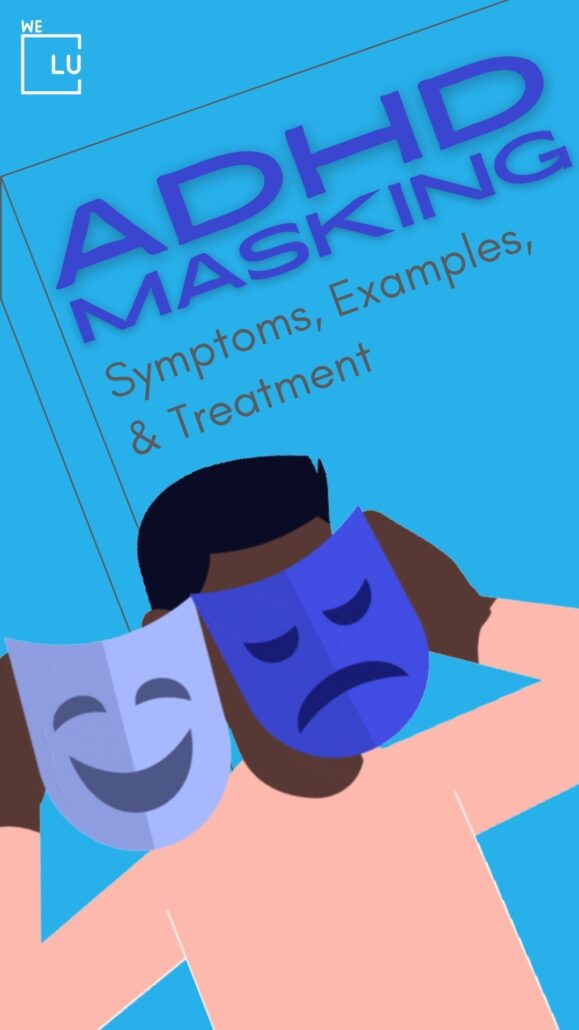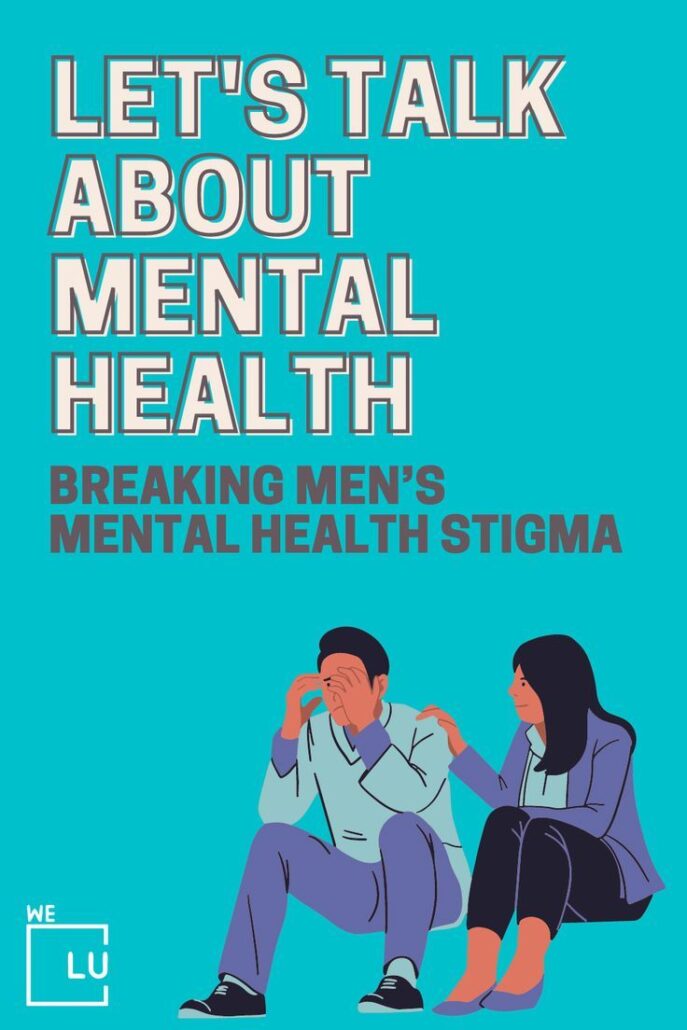What Is ADHD? What is ADHD Masking?
Attention deficit hyperactivity disorder (ADHD) is a mental health disorder that affects the brain. It makes it difficult for a person to pay attention and control their behavior. According to the National Institute of Mental Health, ADHD affects an estimated 15 million people in America. In addition, it is more common in males than females.
The American Psychiatric Association (APA) recognizes ADHD as a medically and legally treatable condition. Individuals with ADHD may have a hard time maintaining attention and finishing tasks. Attention deficit hyperactivity disorder can lead to unstable relationships, poor work performance, depression, and substance abuse. Proper ADHD Treatment is attainable, therefore, early detection is a must.
When someone with ADHD presents in a way that makes it appear as though they do not have the illness, this is known as Masking ADHD. Another name for it is “impression management.” Russell Barkley, a psychologist, said it affects around one-third of all people with ADHD, hence the moniker.
Camouflaging is another term for ADHD masking. When someone with ADHD imitates the actions of others without the disorder, they are attempting to hide their symptoms. Some persons with ADHD may use ADHD masking to blend in socially, avoid stigma, or feel more accepted.
ADHD Symptoms
A person may not be diagnosed with ADHD until adulthood because teachers or family did not recognize the condition at a younger age.
Symptoms can become more severe when the demands of adulthood increase.
- Difficulty finishing tasks
- Problems listening to others
- Struggles with organizing projects or responsibilities
- Forgetfulness
- Constant fidgeting
- Inability to control speech or actions
- Frequently losing or misplacing personal items
People with ADHD may also be clumsy, unable to sleep, and have temper tantrums, and mood swings. They may find it hard to socialize and make friends. The symptoms and development of ADHD vary from person to person.
Types of ADHD
ADHD is a mental disorder that affects many people, and there are different types of this disorder. Types of ADHD can be an inattentive type or a hyperactive-impulsive type.
Inattentive Type
A person with this type often loses focus and thus gets off-topic, people must have at least six of these nine symptoms,
- Making careless mistakes
- Failing to pay attention and keep on task
- Not listening
- Being unable to follow or understand instructions
- Avoiding tasks that involve effort
- Being distracted
- Being forgetful
- Losing things that are needed to complete tasks
Hyperactive-Impulsive Type.
The hyperactive-impulsive type must have six or more of these symptoms:
- Fidgeting
- Squirming
- Getting up often when seated
- Running or climbing at inappropriate times
- Having trouble playing quietly
- Talking too much
- Talking out of turn or blurting out
- Interrupting
Combined Type
The Combined Type means that the person has symptoms from both types, while the Predominantly Inattentive Type means that the person only has symptoms of the first type. People usually go through a series of stages before they receive an accurate diagnosis for either type (Types of ADHD). Someone who is diagnosed with primary inattentiveness might be told they have ADD or some other disorder (Types of ADHD). Since there is still some debate among experts.
Types of ADHD vary in severity. Usually, with medication, most people can adjust to dealing with this disorder. Sometimes there is a possibility that if you don’t take your medication correctly it could cause an overdose with serious consequences. Types of ADHD are different for everyone who has them, but they are all manageable if taken seriously and properly dealt with.

Skip To:
Learn More:
- What is Stimming ADHD? Effective Ways of Managing It
- ADHD Evaluation For The Right Diagnosis And Treatment
- ADHD in Women. Test & Symptom Checklist for Adults.
- How to Increase Motivation With ADHD? 9 Effective Motivation Tips
- The Benefits of Brown Noise ADHD
- Wellbutrin for ADHD
- What is ADHD Paralysis? 8 Effective Ways to Overcome It
- A Done ADHD Complete Review
- Mental Health Poems that are Powerful and Healing
- Short-Term Disability Mental Health
High Intelligence Masking ADHD
What is ADHD masking? ADHD masking is also called impression management or camouflaging. It involves hiding symptoms or overcompensating them. When you mask ADHD, you try to act like you do not have the condition. Masking is not the same thing as managing ADHD. When you manage ADHD, you receive treatment like therapy or medication. Managing ADHD with the help of a therapist can also teach you new organizational methods and skills tailored to you.
While having a condition such as ADHD can change the way intelligence is expressed, IQ and ADHD are two separate characteristics. Individuals with attention deficit hyperactivity disorder (ADHD) can have difficulty with memory and attention. To some individuals, this may make them seem less intelligent than average. On the other hand, they can also appear smarter than others because of their ability to hyperfocus on topics of interest and the enhanced powers of observation. However, even though IQ and ADHD are two separate qualities, they can sometimes impact each other.
Can ADHD be masked by intelligence? There are plenty of individuals with high IQ and ADHD, and many of them are underdiagnosed precisely because high IQ may act as an enhancer of cognitive abilities and possibly compensate for some of the executive deficits associated with ADHD. This may not seem like a bad thing. However, the masking combination of ADHD and high IQ can result in delayed ADHD diagnosis and treatment. Untreated ADHD can cause difficulties later in school as the material becomes more difficult.
Get Help. Get Better. Get Your Life Back.
Searching for Accredited Dual Diagnosis Mental Health Centers Near You?
Even if therapy failed previously, or are in the middle of a difficult crisis, we stand ready to support you. Our trusted behavioral health specialists will not give up on you. When you feel ready or just want someone to speak to about counseling alternatives to change your life call us. Even if we cannot assist you, we will lead you to wherever you can get support. There is no obligation. Call our hotline today.
FREE 24/7 Dual Diagnosis Mental Health Services HotlineADHD Fact Sheet
ADHD Overview
A long-term disorder characterized by impulsivity, hyperactivity, and trouble paying focus. ADHD frequently manifests in early childhood and can last into adulthood. Low self-esteem, problematic relationships, and challenges at school or at work may all be impacted. Limited attention and hyperactivity are symptoms. Talk therapy and medication are used as treatments.
ADHD Symptoms
- Behavioral: Aggression, excitement, fidgeting, hyperactivity, impulsivity, irritability, a lack of self-control, or a pattern of repeatedly repeating words or actions.
- Cognitive: short attention span, forgetfulness, difficulty focusing, absentmindedness, or other cognitive symptoms.
- Mood: Feelings of hostility, worry, boredom, enthusiasm, or mood swings
- Also common: Depression and learning disabilities are also frequent.
ADHD Treatment
- Support group: A place where those pursuing the same disease or objective, such as weight loss or depression, can receive counseling and exchange experiences.
- Cognitive behavioral therapy: A conversation treatment that aimed to change the negative attitudes, actions, and feelings connected to psychiatric discomfort.
- Counseling psychology: A subfield of psychology that handles issues with the self that are connected to work, school, family, and social life.
- Anger management: To reduce destructive emotional outbursts, practice mindfulness, coping skills, and trigger avoidance.
- Psychoeducation: Mental health education that also helps individuals feel supported, validated, and empowered
- Family therapy: psychological counseling that improves family communication and conflict resolution.
ADHD Statistics
The CDC analyzes data from parent surveys and medical claims to comprehend how attention-deficit/hyperactivity disorder is diagnosed and treated (ADHD). Depending on the source, estimates for diagnosis and therapy can differ.
6 Million
The estimated number of children aged 3–17 years ever diagnosed with ADHD, according to a national survey of parents, is 6 million (9.8%) using data from 2016-2019.
Source: Centers for Disease Control and Prevention
62%
A national parent survey from 2016 reported on medication and behavior treatment for children 2–17 years of age with current ADHD 62% were taking ADHD medication
Source: Centers for Disease Control and Prevention
15 Million
ADHD affects an estimated 15 million people in America.
Source: National Institute of Mental Health

What is Masking in ADHD? Masking ADHD Definition
What is masking ADHD? Masking meaning ADHD: When someone with ADHD presents in a way that makes it appear as though they do not have the illness, this is known as Masking ADHD. Another name for it is “impression management.” Russell Barkley, a psychologist, said it affects around one-third of all people with ADHD, hence the moniker.
Masked ADHD – Masking and ADHD
Can ADHD be masked? ADHD masking can take various forms, such as feigning tranquility while acting hyperactive, sitting still at a desk without fidgeting, or responding to questions during class discussions despite having a disorganized mind. In order to prevent distractions and impulsivity, masking can also involve obsessively concentrating on a teacher, task, or activity.
Causes of ADHD Masking
Some individuals mask their ADHD to avoid the stigma that comes with the diagnosis. Others mask symptoms that they’re not aware are part of ADHD. One of the best ways to reduce the effect of unhelpful masking behaviors is to receive a diagnosis and treatment for ADHD. Treatment could help to reduce symptoms, which might make masking seem less necessary.
History and Prevalence of ADHD Masking – High Intelligence Masking ADHD
In his book “Taking Charge of Adult ADHD” published in 2015, Barkley writes about the phenomena of ADHD masking. He stated that some ADHD sufferers attempt to show others that they have the disorder under control by managing their symptoms.
There is still a lack of research on ADHD masking, and it has not been well investigated. This, according to Barkley, is because those without ADHD may find it difficult to believe in the concept of ADHD masking since it is so difficult for them to grasp.
Additionally, doctors don’t always inquire about the possibility of patients who have ADHD since they may be embarrassed to acknowledge they are “faking” it. Therefore, it’s possible that ADHD masking occurs more frequently than we realize.

End the Emotional Pain. Get Your Life Back.
Feeling Depressed, Anxious or Struggling with Mental Health Illness? Get Safe Comfortable Mental Health Dual Diagnosis High-Quality Therapy From Counselors That Care. Begin Your Recovery Now.
Hotline (855) 940-6125ADHD Masking Examples, ADHD Masking in Adults
Masking in ADHD is a technique for disguising symptoms using either healthy or bad learned behaviors. Due to their activities, many people with ADHD violate social norms and risk embarrassment and mockery. They thus devise coping mechanisms to conceal aspects of themselves.
When a person is young and trying to make sense of the world, ADHD masking can be employed as a coping method to assist the person get by. However, gradually it becomes challenging to control this habit on your own. It is also a good idea to do an ADHD masking quiz to see if you have a masking behavior ADHD.
Here are a few masking ADHD examples:
- Being extremely circumspect with your words to avoid talking too much or disturbing others while remaining too quiet.
- Obsessively going through your items to make sure nothing is missing.
- Reacting in class as expected rather than from your own state.
- Pretending that everything is ok but actually having difficulty keeping up with or maintaining connections.
- Being overly concerned with how clean the house is, despite the fact that maintaining it may be too much labor for you to handle.
- Hiding hyperactivity through calmness, people think everything is fine, but in reality, you have trouble. focusing because your mind jumps from one thing to another too quickly to process what anyone around you is saying at the moment.
- Being unable to relax leading up to appointments and arriving much too early, as a way to ensure that you are not late due to time blindness.
- Listening carefully and focusing too hard when someone is talking to not miss anything they say.
- Excessively writing everything down so you don’t forget it later because of memory issues with ADHD.
- Obsessively organizing paperwork and creating systems to make sure you can find what you need.
- Bottling up intense emotions until you feel sick inside without knowing why (this can sometimes also lead to major depressive syndrome).
- Calling in sick to avoid being placed in stressful or anxiety-inducing situations.
- Being irritable when you force yourself to concentrate on something that doesn’t interest you for an extended period of time.
- Taking on too much responsibility to make up for what you perceive as your faults.
- Attempting to cope with the world by developing perfectionistic tendencies (e.g., expecting that you will never do anything wrong).
- Overdoing something until exhaustion sets in so that others see how capable and reliable you are even though deep down you are struggling.
- ADHD masking at school & ADHD masking burnout: Hiding that you may feel overwhelmed by your responsibilities leads to feelings of shame and guilt.
- A need to always appear in control to avoid feeling ashamed about whether others see your struggles.
- Suppressing ADHD stimming behaviors like leg bouncing so you don’t disturb others even though you feel uncomfortable sitting still.
- Mimicking or copying other people in social situations so that you will be accepted.
First-class Facilities & Amenities
World-class High-Quality Mental Health Services & Behavioral Health Substance Abuse Treatment
Rehab Centers TourRenowned Mental Health Centers. Serene Private Facilities. Inpatient Rehab Programs Vary.
Mental Health Helpline (855) 940-6125Proven recovery success experience, backed by a Team w/ History of:
15+
Years of Unified Experience
100s
5-Star Reviews Across Our Centers
10K
Recovery Successes
- Comprehensive Dual-Diagnosis Treatment
- Complimentary Family & Alumni Programs
- Coaching, Recovery & Development Events
- Comfortable Onsite Medical Detox Center
ADHD Masking Symptoms (ADHD and Masking)
Masking with ADHD: Below are some of the potential negative impacts of engaging in ADHD masking adults.
- ADHD masking can hide symptoms, which may lead to a delay in diagnosis.
- People who engage in ADHD masking might be unaware that they have undiagnosed ADHD, which can lead them to develop depression and anxiety.
- If you are very good at masking your ADHD symptoms, people may not believe you when you tell them that something is wrong or that you are struggling.
- People who engage in ADHD masking might also be at higher risk for developing substance abuse problems to cope with how they feel inside, which can lead to even more health issues down the line.
- ADHD masking replaces outward stress with internal stress. People who engage in ADHD masking can continue to go undiagnosed for years because they are able to hide their struggles well.
- ADHD masking can make it hard for you to know what is real and what is an act. You may feel as if you are not able to be yourself and instead turn into someone else so that others will like you.

ADHD symptoms that go untreated can significantly affect a person’s daily life.
Can Anxiety Mask ADHD? ADHD Masked by Anxiety
It might be challenging to discern between ADHD and anxiety symptoms because they are similar (anxiety masking ADHD). One disorder’s symptoms may be mistaken for those of another. Finding a dual diagnosis that allows for the full treatment that is required can also be difficult.
Masking and Stimming ADHD
People who attempt to disguise their symptoms do so because they believe doing so will make their social interactions with others more pleasant. ADHD stimming, such as clicking pens or jumping legs, is one of these.
How to Stop Masking ADHD?
Once you realize that your ADHD is being masked, you can start learning coping mechanisms to avoid changing into someone else. You might be amazed by how much more joyful life is once you develop new coping mechanisms rather than trying to hide your difficulties.
Here are some suggestions to get you going:
- Identify which forms of ADHD masking behaviors are healthy and which are hurting you. For example, learning to keep a reasonably tidy home might be helpful, whereas needing everything to be perfect would be harmful.
- Learn how to deal with your emotions instead of avoiding them. Seek out a therapist or coach who understands what you are going through.
- Understand that you are not alone in how you experience life. Connect with other people going through the same struggles so that you can feel less alone. For example, join a support group for people living with ADHD. Find an online community where it will be safe to express yourself without judgment.
World-class, Accredited, 5-Star Reviewed, Effective Mental Health Dual Diagnosis Programs. Complete Integrated Inpatient Rehab with Free Post Discharge Therapy Planning.
CALL (855) 940-6125End the Emotional Pain Rollercoaster. Gain Stability & Happiness Through Recovery Treatment. Start Mental Health Counseling Today. Get Free No-obligation Guidance by Behaviroal Health Specialists Who Understand Mental Health Recovery.
We Level Up Dual Diagnosis Treatment

The exact definition of dual diagnosis (also referred to as co-occurring disorders) can differ between institutions. However, it is generally described as the specific treatment of someone who has been diagnosed with a substance use disorder and a mental health disorder at the same time.
Treating dual-diagnosis clients is a critical aspect of our inpatient treatment experience because co-occurring disorders are strongly correlated with instances of substance abuse. Creating a treatment plan that addresses the physical aspects of withdrawal, the psychological connection with drug use, and managing underlying mental health disorders is part of setting clients up for success.
A thorough mental health analysis identifies possibilities for treatment. Meeting with mental health counselors and medical care providers means access to behavioral therapy and medication treatment.
At our dual diagnosis treatment center, We Level Up can implement the highest quality of care. We recognize the fragile complexities of how mental and substance abuse disorders can influence others and sometimes result in a vicious cycle of addiction. That’s why we offer specialized treatment in dual-diagnosis cases to provide the most excellent chance of true healing and long-lasting recovery.
It can be challenging to accept that you may be living with a mental illness, but once it is properly diagnosed and treated, treating the presenting case of substance abuse can be magnitudes easier. Only a properly trained medical professional can diagnose these underlying conditions. If you believe you are suffering from a disorder alongside addiction, we urge you to seek a qualified treatment center to begin your journey to recovery. Call We Level Up today.
Experience Transformative Recovery at the We Level Up Treatment Center.
See our authentic success stories. Get inspired. Get the help you deserve.



Start a New Life
Begin with a free call to a behavioral health treatment advisor. Learn more about our dual-diagnosis programs. The We Level Up treatment center network delivers recovery programs that vary by each treatment facility. Call to learn more.
- Personalized Care
- Caring Accountable Staff
- World-class Amenities
- Licensed & Accredited
- Renowned w/ 5-Star Reviews
We’ll Call You
Search We Level Up FL “ADHD Masking” Topics & Resources
Sources
[1] Mental Illness – NIMH
[2] What is ADHD? – Centers for Disease Control and Prevention
[4] ADHD Treatment Recommendations
[5] Attention-Deficit/Hyperactivity Disorder
[6] Attention-Deficit/Hyperactivity Disorder (ADHD) – NIMH
[7] Dealing with ADHD: What You Need to Know
[8] Adults With Attention Deficit Hyperactivity Disorder and Substance Use Disorders
[9] Attention Deficit Hyperactivity Disorder: Diagnosis and Treatment in Children and Adolescents